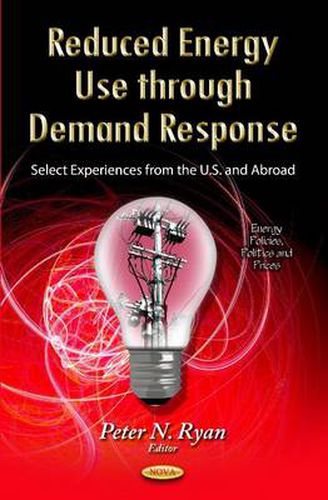Readings Newsletter
Become a Readings Member to make your shopping experience even easier.
Sign in or sign up for free!
You’re not far away from qualifying for FREE standard shipping within Australia
You’ve qualified for FREE standard shipping within Australia
The cart is loading…






Demand response (DR) is a load management tool which provides a cost-effective alternative to traditional supply-side solutions to address the growing demand during times of peak electrical load. According to the U.S. Department of Energy (DOE), demand response reflects changes in electric usage by end-use customers from their normal consumption patterns in response to changes in the price of electricity over time, or to incentive payments designed to induce lower electricity use at times of high wholesale market prices or when system reliability is jeopardised . The California Energy Commission (CEC) defines DR as a reduction in customers’ electricity consumption over a given time interval relative to what would otherwise occur in response to a price signal, other financial incentives, or a reliability signal. This latter definition is perhaps most reflective of how DR is understood and implemented today in countries such as the U.S., Canada, and Australia where DR is primarily a dispatchable resource responding to signals from utilities, grid operators, and/or load aggregators (or DR providers). This book examines select experiences from the U.S. and abroad corresponding to reduced energy usage through demand response.
$9.00 standard shipping within Australia
FREE standard shipping within Australia for orders over $100.00
Express & International shipping calculated at checkout
Demand response (DR) is a load management tool which provides a cost-effective alternative to traditional supply-side solutions to address the growing demand during times of peak electrical load. According to the U.S. Department of Energy (DOE), demand response reflects changes in electric usage by end-use customers from their normal consumption patterns in response to changes in the price of electricity over time, or to incentive payments designed to induce lower electricity use at times of high wholesale market prices or when system reliability is jeopardised . The California Energy Commission (CEC) defines DR as a reduction in customers’ electricity consumption over a given time interval relative to what would otherwise occur in response to a price signal, other financial incentives, or a reliability signal. This latter definition is perhaps most reflective of how DR is understood and implemented today in countries such as the U.S., Canada, and Australia where DR is primarily a dispatchable resource responding to signals from utilities, grid operators, and/or load aggregators (or DR providers). This book examines select experiences from the U.S. and abroad corresponding to reduced energy usage through demand response.